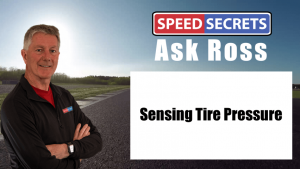 Q: “I once had an instructor in my car tell me that my tires were overinflated. How could he tell that? How can I get better at noticing that kind of thing?”
Q: “I once had an instructor in my car tell me that my tires were overinflated. How could he tell that? How can I get better at noticing that kind of thing?”
A: You asked, “How did an instructor know my tires were overinflated just by how the car felt?” The simple answer to that is, “Experience.” I bet he/she has felt what overinflated tires felt like in the past.
The less simple answer has to do with exactly what they felt that triggered a past experience. Often, an overinflated tire will tend to have the feeling that it slides on the surface of the track; that’s different than an underinflated tire that feels as though it digs into the track surface, but then kinda rolls over and lets go. I don’t know how old you are, but I remember getting a rubber eraser in school that had two different types of rubber – one end was soft rubber, and the other end was harder rubber. If you rubbed them along a desk surface, the hard one slid easier – that’s kinda like an overinflated tire. The soft end of the eraser would have more friction against the desk, but if it was a tire, it would make the car feel soft and rolly – kinda like driving your street car on a dry road with snow tires that makes it feel like the car is not responsive. (Hmmm… maybe I spent too much time in school playing with rubber erasers, imagining them as race tires!) Obviously, what you want is balance between the two – good grip, but also responsive.
The best way to develop this experience is to experiment. I know everyone has a budget – money and time – but imagine if you could go to the track for one full day, and all you did was raise the tire pressures in increments, then lowered them, then changed the front-rear balance. Each time you drove the car, and made notes of what you felt that was different. In one day you’d develop as much experience as many drivers do in a matter of years.
